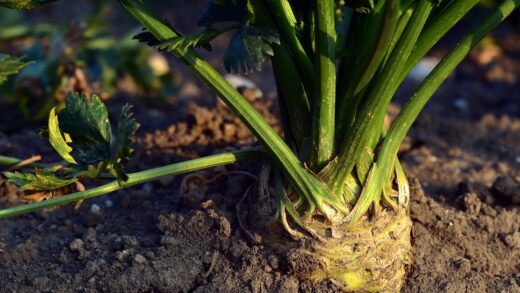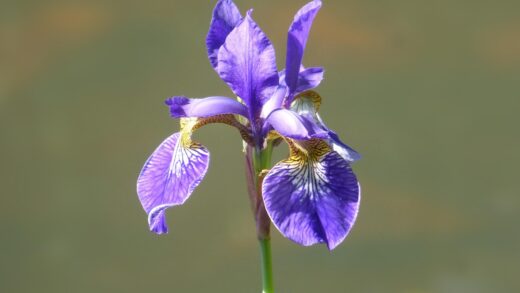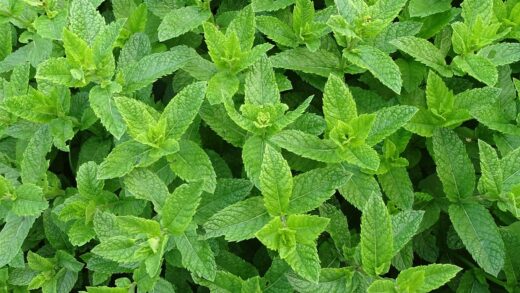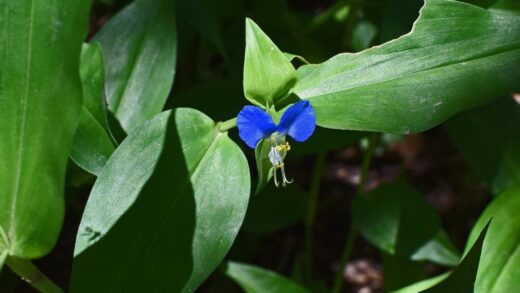Despite its reputation as a tough and resilient plant, the blanket flower is not entirely immune to the challenges posed by diseases and pests. While generally healthy and untroubled, certain environmental conditions or pest pressures can lead to problems. A proactive approach, focused on creating a healthy growing environment, is the most effective strategy for preventing these issues from ever taking hold. By ensuring proper sunlight, excellent drainage, and good air circulation, you can significantly reduce the likelihood of your plants succumbing to ailments. Understanding the common culprits and their symptoms will allow you to intervene quickly and effectively should a problem arise, preserving the beauty and vigor of your floral display.
The vast majority of diseases that affect blanket flowers are fungal in nature and are directly linked to excess moisture and poor air circulation. Conditions such as powdery mildew, leaf spot, and root rot are far more prevalent in humid climates, during particularly rainy seasons, or when plants are spaced too closely together. These issues are rarely a problem in the hot, dry, and sunny conditions that the plant truly prefers. Therefore, the first line of defense is always proper site selection and planting practices. A plant that is stressed by inadequate light or waterlogged soil is inherently more vulnerable to both diseases and pest infestations.
When it comes to pests, the blanket flower is not a primary target for most common garden insects. Its slightly fuzzy leaves and stems can deter some pests, and its robust nature allows it to withstand minor insect activity without significant harm. However, sap-sucking insects like aphids can occasionally become a nuisance, particularly on new, tender growth. Vigilance is key; regularly inspecting your plants allows you to catch any potential pest problems early, when they are much easier to manage with simple, non-toxic methods. A healthy garden ecosystem with a population of beneficial insects will also provide a natural and effective pest control service.
In the rare event that a serious issue like aster yellows appears, prompt and decisive action is required to protect the rest of your garden. This incurable disease underscores the importance of monitoring plant health and recognizing when a plant’s symptoms are abnormal. By familiarizing yourself with the signs of the most common diseases and pests, you empower yourself to act as a steward for your garden’s health. Your goal is to create a balanced environment where your blanket flowers can thrive, their natural resilience shining through, making them less susceptible to the pressures that can cause less hardy plants to falter.
Common fungal diseases
Powdery mildew is one of the most frequently encountered fungal diseases on blanket flowers, especially in late summer or during periods of high humidity and warm temperatures. It is easily recognizable by the characteristic white, powdery patches that appear on the leaves, stems, and sometimes the flower buds. While it is often more of a cosmetic issue than a fatal one, a severe infection can stress the plant, reduce photosynthesis, and cause leaves to yellow and die prematurely. Prevention is the best cure. Ensure your plants have ample spacing to promote good air circulation, and avoid overhead watering, which wets the foliage and encourages fungal growth.
More articles on this topic
Another potential issue is fungal leaf spot, which can be caused by a variety of different fungi. This disease manifests as distinct spots or lesions on the leaves. The appearance of the spots can vary depending on the specific pathogen, but they are often brown or black, sometimes with a yellow halo around the edge. As the disease progresses, the spots may enlarge and merge, leading to significant leaf discoloration and drop. Like powdery mildew, leaf spot thrives in damp conditions. Good garden hygiene, such as removing and destroying affected leaves and cleaning up fallen debris in the autumn, can help to reduce the amount of fungal spores that can overwinter and cause problems the following year.
The most serious and deadly disease for the blanket flower is root and crown rot, typically caused by soil-borne fungi like Phytophthora or Pythium. This disease is almost exclusively a result of waterlogged soil with poor drainage. The fungi attack the plant’s root system, causing it to decay and become black and mushy. Above ground, the plant will appear wilted, stunted, and its leaves will turn yellow, even though the soil is wet. Once crown rot sets in at the base of the plant, it is almost always fatal. There is no chemical cure; prevention through the provision of excellent drainage is the only reliable strategy.
To manage fungal diseases, cultural controls are most effective. If an infection of powdery mildew or leaf spot does take hold, you can take action to limit its spread. Prune out and dispose of the most heavily affected plant parts to improve air circulation. For persistent problems, there are fungicidal treatments available. Horticultural oils, neem oil, and sprays containing potassium bicarbonate or sulfur are effective against powdery mildew when applied according to the label directions. However, these are treatments for the symptoms, not the underlying cause, which is almost always an environmental issue.
Identifying and managing pests
While relatively pest-resistant, blanket flowers can sometimes attract aphids. These are small, pear-shaped, sap-sucking insects that tend to congregate in clusters on the tender new growth, flower buds, and the undersides of leaves. They feed by piercing the plant tissue and extracting the sugary sap, which can lead to distorted growth, yellowing leaves, and a weakened plant if the infestation is heavy. Aphids also excrete a sticky substance called honeydew, which can attract sooty mold. Fortunately, aphids are among the easiest pests to control.
More articles on this topic
For a small aphid problem, a strong jet of water from a garden hose is often enough to dislodge them from the plant. This method is simple, free, and non-toxic. For more established colonies, you can use an insecticidal soap spray. These soaps work by disrupting the insect’s outer cell membrane and are effective only on direct contact. Be sure to thoroughly coat all surfaces of the plant, especially the undersides of leaves where aphids like to hide. Repeat applications may be necessary every few days to control newly hatched aphids. Neem oil is another effective organic option that acts as both an insecticide and a fungicide.
Encouraging natural predators is the best long-term strategy for aphid control. Ladybugs, lacewings, hoverflies, and parasitic wasps are all voracious predators of aphids. You can attract these beneficial insects to your garden by planting a diversity of flowering plants, particularly those with small flowers like dill, fennel, and yarrow. Avoiding the use of broad-spectrum chemical pesticides is also crucial, as these will kill the beneficial insects along with the pests, leaving your plants more vulnerable to future outbreaks. A healthy, biodiverse garden will often keep pest populations in check naturally.
Other pests are generally a minor concern. Spider mites might appear in very hot, dry conditions, causing a stippling or fine webbing on the leaves. Leafhoppers, which are small, wedge-shaped, jumping insects, can also be present. While their feeding causes minimal damage, they are a concern because they are the primary vectors for the transmission of the aster yellows disease. Managing these pests is similar to managing aphids, with an emphasis on water sprays and insecticidal soaps, but controlling them completely can be difficult. The focus should remain on keeping the plants as healthy and stress-free as possible.
The threat of aster yellows
Aster yellows is a serious, systemic disease that can affect blanket flowers along with hundreds of other plant species in the aster family. It is caused by a phytoplasma, a type of microscopic organism similar to a bacterium. The disease is spread from infected plants to healthy plants exclusively by the feeding activity of leafhoppers. When a leafhopper feeds on an infected plant, it ingests the phytoplasma and can then transmit it to every subsequent plant it feeds on for the rest of its life. The disease is not spread through soil, water, or tools.
The symptoms of aster yellows are highly distinctive and unusual. Infected plants will exhibit strange and distorted growth. The most tell-tale sign is virescence, where the flower petals turn green or greenish-yellow. Another common symptom is phyllody, where flower parts develop into leafy, green structures. The flowers may be stunted, malformed, and remain green instead of developing their normal vibrant colors. The plant’s foliage may turn yellow in a mottled or blotchy pattern, and it may develop an excessive number of secondary shoots, giving it a witches’-broom appearance.
Unfortunately, there is no cure for aster yellows. Once a plant is infected with the phytoplasma, it is infected for life and will never recover. The disease is systemic, meaning it is present throughout the entire plant, from the roots to the flowers. Because infected plants act as a reservoir for the pathogen, allowing leafhoppers to acquire and spread it further, it is critical to act swiftly. Any plant that you positively identify as having aster yellows must be removed from the garden and destroyed immediately. Do not add it to your compost pile, as this will not kill the phytoplasma.
Preventing aster yellows is challenging because it requires controlling the leafhopper vectors. Since leafhoppers are mobile and can travel long distances, completely eliminating them from the garden is not a realistic goal. The best strategy is to maintain good weed control in and around the garden, as many common weeds can also host the disease. Promptly removing any infected plants is the most crucial step in preventing an outbreak. By being a vigilant gardener and recognizing the unique symptoms of this disease, you can protect the health of your other susceptible plants.
Preventive care and garden hygiene
The most effective approach to managing diseases and pests on your blanket flowers is prevention. A healthy, thriving plant is far less susceptible to problems than one that is stressed by poor growing conditions. The foundation of preventive care is to mimic the plant’s native habitat as closely as possible. This means providing at least six to eight hours of direct sunlight, planting in soil with sharp and excellent drainage, and watering deeply but infrequently, allowing the soil to dry out between waterings. Getting these cultural requirements right solves the majority of potential problems before they can start.
Proper spacing is another critical element of preventive care. When planting your blanket flowers, be sure to space them according to the recommendations for the specific variety, typically 30 to 45 centimeters apart. This ensures that even when the plants reach their mature size, there is still ample air circulation around them. Good airflow helps to keep the foliage dry, which is the single most important factor in preventing the germination and spread of fungal spores that cause diseases like powdery mildew and leaf spot. Crowded plants create a humid microclimate that is an open invitation for fungal pathogens.
Good garden hygiene plays a vital role in reducing the incidence of both pests and diseases. Throughout the growing season, make it a habit to remove any leaves that appear spotted, yellowed, or diseased. This practice, known as sanitation, removes a source of inoculum and can slow the spread of a problem. In the autumn, after the first hard frost, it is a good practice to cut back the dead stems and leaves and remove them from the garden. This cleanup eliminates overwintering sites for fungal spores and insect eggs, ensuring your garden starts the next spring with a cleaner slate.
Finally, foster a healthy and balanced garden ecosystem. Encourage biodiversity by planting a wide variety of plants, which in turn will attract a wide variety of insects, including beneficial predators and pollinators. Avoid the use of broad-spectrum chemical pesticides, which disrupt this delicate balance by killing beneficial insects as well as pests. A garden that is alive with ladybugs, lacewings, and predatory wasps is a garden with a built-in pest control system. By working with nature, you can create a resilient garden where your blanket flowers can flourish with minimal intervention.


















